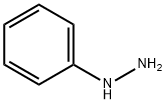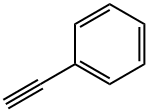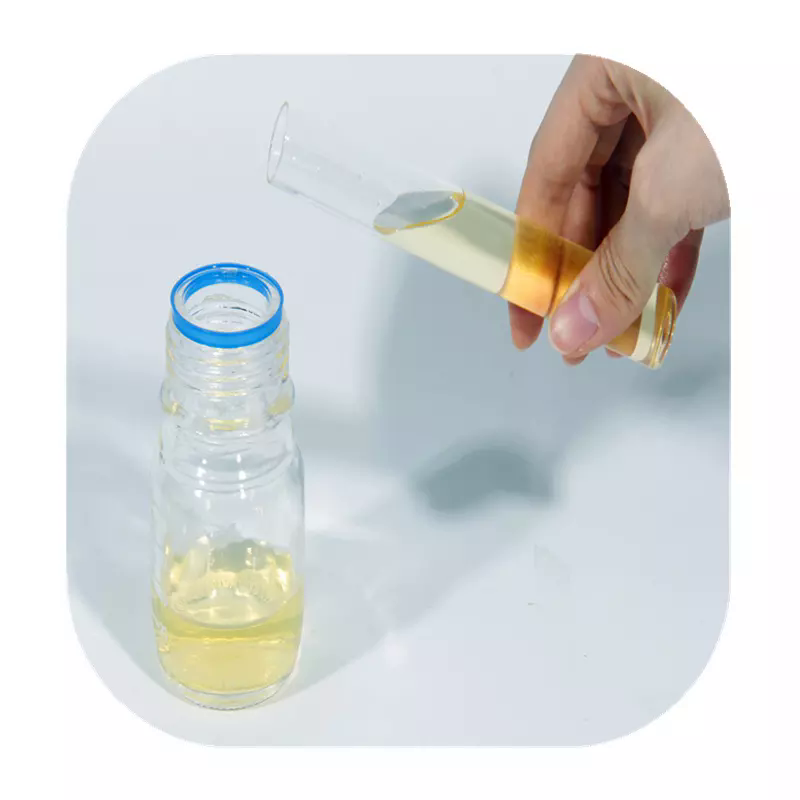Phenylacetyl chloride
Synonym(s):α-Toluyl chloride
- CAS NO.:103-80-0
- Empirical Formula: C8H7ClO
- Molecular Weight: 154.59
- MDL number: MFCD00000729
- EINECS: 203-146-5
- SAFETY DATA SHEET (SDS)
- Update Date: 2025-09-25 17:15:13

What is Phenylacetyl chloride?
Chemical properties
colourless liquid
The Uses of Phenylacetyl chloride
Phenylacetyl chloride is used in the preparation of 1,2-diphenyl-ethanone by reaction with iodobenzene using tetrabutylammonium tetrafluoroborate as a phase transfer catalyst. It is widely used in the chemical industry for manufacturing dyes and pharmaceutical products. It plays an important role in the preparation of penicillin. Further, it is used to prepare esters for flavorings.
The Uses of Phenylacetyl chloride
Phenylacetyl chloride is used as a key precursor in the total synthesis of vialinin B. It is employed as a linker to prepare dendrimers and also used in the synthesis of various conjugated aromatic small molecules.
Synthesis Reference(s)
Journal of the American Chemical Society, 96, p. 6469, 1974 DOI: 10.1021/ja00827a034
Organic Syntheses, Coll. Vol. 2, p. 156, 1943
General Description
A colorless volatile liquid with a strong odor. Denser than water. Contact may severely irritate skin, eyes and mucous membranes. May be toxic by ingestion. May also be combustible.
Air & Water Reactions
Soluble in water. Fumes in air. Decomposes in water or steam to form very corrosive hydrogen chloride gas.
Reactivity Profile
Phenylacetyl chloride is incompatible with strong oxidizing agents, alcohols, bases (including amines). May react vigorously or explosively if mixed with diisopropyl ether or other ethers in the presence of trace amounts of metal salts [J. Haz. Mat., 1981, 4, 291].
Health Hazard
TOXIC; inhalation, ingestion or contact (skin, eyes) with vapors, dusts or substance may cause severe injury, burns or death. Contact with molten substance may cause severe burns to skin and eyes. Reaction with water or moist air will release toxic, corrosive or flammable gases. Reaction with water may generate much heat that will increase the concentration of fumes in the air. Fire will produce irritating, corrosive and/or toxic gases. Runoff from fire control or dilution water may be corrosive and/or toxic and cause pollution.
Fire Hazard
Combustible material: may burn but does not ignite readily. Substance will react with water (some violently) releasing flammable, toxic or corrosive gases and runoff. When heated, vapors may form explosive mixtures with air: indoors, outdoors and sewers explosion hazards. Most vapors are heavier than air. They will spread along ground and collect in low or confined areas (sewers, basements, tanks). Vapors may travel to source of ignition and flash back. Contact with metals may evolve flammable hydrogen gas. Containers may explode when heated or if contaminated with water.
Properties of Phenylacetyl chloride
| Melting point: | 264-266 °C(Solv: N,N-dimethylformamide (68-12-2)) |
| Boiling point: | 94-95 °C/12 mmHg (lit.) |
| Density | 1.169 g/mL at 25 °C (lit.) |
| refractive index | n |
| Flash point: | 217 °F |
| storage temp. | 2-8°C |
| solubility | Miscible with alcohol and ether. |
| form | clear liquid |
| color | Colorless to Light yellow |
| Sensitive | Moisture Sensitive |
| BRN | 742254 |
| Stability: | Stable. Reacts with water. Incompatible with amines, most common metals, moisture, strong oxidizing agents. |
| CAS DataBase Reference | 103-80-0(CAS DataBase Reference) |
| NIST Chemistry Reference | Benzeneacetyl chloride(103-80-0) |
| EPA Substance Registry System | Benzeneacetyl chloride (103-80-0) |
Safety information for Phenylacetyl chloride
| Signal word | Danger |
| Pictogram(s) |
 Corrosion Corrosives GHS05  Exclamation Mark Irritant GHS07 |
| GHS Hazard Statements |
H290:Corrosive to Metals H314:Skin corrosion/irritation H335:Specific target organ toxicity, single exposure;Respiratory tract irritation |
| Precautionary Statement Codes |
P234:Keep only in original container. P261:Avoid breathing dust/fume/gas/mist/vapours/spray. P271:Use only outdoors or in a well-ventilated area. P280:Wear protective gloves/protective clothing/eye protection/face protection. P303+P361+P353:IF ON SKIN (or hair): Remove/Take off Immediately all contaminated clothing. Rinse SKIN with water/shower. P305+P351+P338:IF IN EYES: Rinse cautiously with water for several minutes. Remove contact lenses, if present and easy to do. Continuerinsing. |
Computed Descriptors for Phenylacetyl chloride
Phenylacetyl chloride manufacturer
New Products
4,4-Difluoropiperidine hydrochloride tert-butyl 9-methoxy-3-azaspiro[5.5]undecane-3-carboxylate Indole Methyl Resin N-Isopropylurea N,N-Dicyclohexylcarbodiimide(DCC) MELDRUMS ACID 5-METHYLISOXAZOLE-4-CARBOXYLIC ACID Magnessium Bis glycinate Zinc ascorbate 1-bromo-2-butyne 2-acetamidophenol 9(10H)-anthracenone Erythrosin B, 4-Piperidinopiperidine 2-((4-morpholinophenylamino) (methylthio) methylene) malononitrile 2,4-dihydroxybenzaldehyde 3-(4-morpholinophenylamino)-5-amino-1H-pyrazole-4-carbonitrile Methyl 2-methylquinoline-6-carboxylate 2,6-dichloro-4-nitropyridine 4-Bromo-2-chlorobenzonitrile 2-(benzylamino)acetic acid hydrochloride 4-(tert-Butoxycarbonylamino)but- 2-ynoic acid 3,4-dihydro-2H-benzo[b][1,4]dioxepine 1-Phenyl-1-cycloprppanecarboxylicacidRelated products of tetrahydrofuran








You may like
-
 Phenyl Acetyl Chloride 103-80-0 99%View Details
Phenyl Acetyl Chloride 103-80-0 99%View Details
103-80-0 -
 2-PHENYL ACETYALCHLORIDE 103-80-0 98%View Details
2-PHENYL ACETYALCHLORIDE 103-80-0 98%View Details
103-80-0 -
 Phenylacetyl chloride 98%View Details
Phenylacetyl chloride 98%View Details
103-80-0 -
 Phenylacetyl chloride 98%View Details
Phenylacetyl chloride 98%View Details
103-80-0 -
 Phenylacetyl Chloride CAS 103-80-0View Details
Phenylacetyl Chloride CAS 103-80-0View Details
103-80-0 -
 Phenylacetyl chloride 96% CAS 103-80-0View Details
Phenylacetyl chloride 96% CAS 103-80-0View Details
103-80-0 -
 Phenylacetyl chloride CAS 103-80-0View Details
Phenylacetyl chloride CAS 103-80-0View Details
103-80-0 -
 PHENYL ACETYL CHLORIDEView Details
PHENYL ACETYL CHLORIDEView Details
103-80-0
